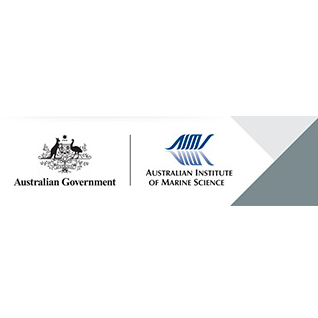Brief description
Chemical and biological oceanographic data were collected at intervals of approximately one month, from the central region of the Great Barrier Reef between March 1980 and August 1981. The survey area covers a section of the Coral Sea off Townsville, including the Great Barrier Reef from Palm Passage in the north to Flinders Passage in the south.
This research was undertaken to examine seasonal nutrient distributions and thermohaline cycles.
Cruises 1 to 10 followed a pattern which incorporated 4 transects, 2 of which lay parallel to the continental margin on each side of the reef whilst the other 2 traversed the reef through Palm and Flinders Passages. Cruises 11 to 19 followed transects through Palm and Magnetic Passages. Additional transects were made during cruises 13, 15 and 18 to complete a grid pattern across the outer shelf and shelf-break.Samples were routinely taken from the following nominal depths: 0, 5, 10, 25, 50, 100, 150, 200, 300, 450, 600 and 750 m. When the depth was less than 750m, the nominal depth of the bottom sample was set to 3m above the bottom. Station 31 was selected as a fine sampling station. Here the water between 90m and 150m was sampled at 10m intervals.Parameters measured:Nutrients: Nitrate, nitrite, phosphate and silicateDissolved Oxygen SalinitySea TemperatureChlorophyll-a, Phaeopigments
Lineage
Maintenance and Update Frequency: notPlanned
Statement: Statement: Samples were collected with General Oceanics 5 litre PVC Niskin bottles, equipped with Yoshima Keiki reversing thermometers. During cruises 1 to 7, only 1 thermometer (protected) was available for each bottle and depths were estimated from the length of wire out. One protected and one unprotected thermometer were fitted to each bottle prior to cruise 8 and thereafter thermometric depths were determined (see "U.S. Naval Oceanographic Office, 1968. Instruction Manual for Obtaining Oceanographic Data. Publication No. 607, Third Edition"). Thermometers were read to 0.01°C after 20 min equilibration in a controlled temperature room.Subsamples were removed immediately after retrieval in the following sequence: oxygen, nutrients, chlorophyll and salinity.Dissolved Oxygen:All oxygen samples through cruises 1 to 8 were determined by the Winkler method (see "Strickland, J.D.H. and T.R. Parsons, 1972. A practical handbook of seawater analysis. Bull. Fish. Res. Bd. Canada, 167: 1-310"). Thereafter, oxygen samples were measured directly with an E.I.L. (Model 8012) dissolved oxygen probe standardized against known samples determined by the Winkler method.Nutrients:Nutrients analysed were nitrate, nitrite, phosphate and silicate. In most instances, samples were analysed at sea within 2 hours of collection, using a multichannel autoanalyser adapted at AIMS for low nutrient levels in seawater. The detection limits were: nitrate - 0.05ug at/l, nitrite - 0.02ug at/l, phosphate - 0.02ug at/l, silicate - 0.4ug at/l (see "Ryle, V.D., H.R. Mueller and P. Gentien, 1981. Automated analysis of nutrients in tropical sea waters. AIMS Tech. Bull., Oceanography Series No.3."). Samples not processed at sea were stored at -18°C for later laboratory analysis. Such storage appears adequate (see "MacDonald, R.W., F.A. McLaughlin and J.S. Page, 1980. Nutrient storage by freezing: Data Report and Statistical Analysis. Pacific Marine Science Report 80-2" and "Ryle, V.D. and H.R. Mueller, 1981. Filtration, storage and preservation of seawater samples for nutrient analysis. AIMS Analytical Services Lab. Note No. 10"). Automated analysis of seawater requires the removal of particulate matter. Initially (cruises 1-9) samples were filtered through 0.45um "millipore" filters. However, contamination was found to occur both from the cellulose nitrate filter material and from silicates in the glassware (see "Ryle, V.D. and H.R. Mueller, 1981. Filtration, storage and preservation of seawater samples for nutrient analysis. AIMS Analytical Services Lab. Note No. 10"). "Millipore" filtering was therefore discontinued and nutrient samples were passed directly from the Niskin bottle, through on-line 20um plankton netting filters, into acid washed 100ml plastic bottles (see "Tregeur, P. and P. LeCorre, 1975. Manuel d'Analyse des sels nutritifs dans l'eau de mer. Universite de Bretagne Occidentale, Brest", "McCarthy, J.J., W.R. Taylor and J.L. Taft, 1977. Nitrogen nutrition of the plankton in Chesapeake Bay. 1. Nutrient availability and phytoplankton preferences. Limnol. Oceanogr. 22, 996" and "Ryle, V.D. and H.R. Mueller, 1981. Filtration, storage and preservation of seawater samples for nutrient analysis. AIMS Analytical Services Lab. Note No. 10"). The listed nitrate and silicate values for cruises 1 to 9 were adjusted by adding the mean of the difference, obtained using both methods simultaneously on trial samples (-0.24 for nitrate and -0.38 for silicate). Nitrate contamination is considered to be consistent between samples, however, silicate values for cruises 1 to 9 should be treated with caution.Phytoplankton pigments:Samples of 500ml were filtered onto 47mm diameter Gf/C glass fibre filters and analysed for Chlorophyll a and phaeopigments by the fluorometric method (see "Strickland, J.D.H. and T.R. Parsons, 1972. A practical handbook ofseawater analysis. Bull. Fish. Res. Bd. Canada, 167: 1-310") using a Turner Model 111 fluorometer.Salinity:Salinity samples were stored at 7°C and later read at room temperature using a Plessy 6230N Salinometer with a specified accuracy ± 0.003 0/00.Station positions:Most positions were obtained from satellite navigation fixes (SATNAV).
Notes
Credit
Andrews, John C, Dr (Principal Investigator)


